Battlefield has always been a difficult franchise to pin down. Is it historical or modern? Is it competitive or casual? Is it a tactical, team-based experience, or is it merely a good place to frag out to your heart’s content?
The answer to all those questions is: Yes.
Battlefield means many things to many people, but I will tell you what Battlefield means to me. Battlefield is about making memories with my friends. It’s an action movie that I can play with my friends. If I want to get into an extended infantry firefight, or cause wanton destruction in a tank, or strap explosives to a jeep and ram it into an enemy vehicle, I can. It’s the series that almost exclusively spawns those “remember that time” conversations.
What made earlier Battlefield games so special is that they were specifically designed to create those conversations. The “only in Battlefield” tag might be a memetic marketing tool, but there’s a reason why it resonates with so many fans of the series. Through the tools and contexts available in their sandboxes, DICE specifically designed Battlefield games so that players could create their own emergent narratives.
As much as I enjoyed the series’ recent foray back into historical fiction with Battlefield 1 and, to a lesser extent, Battlefield V, there was something missing. Yes, Battlefield 1 was incredibly immersive and atmospheric, and yes, Battlefield V preyed on my weakness for World War II–themed shooters, but neither of those games created an environment that stimulated my imagination. Instead, they felt too grounded, too focused on killing, and relatively unconcerned with giving players the freedom that the preceding titles had worked so hard to create. In other words, they didn’t feel like sandboxes in the way that previous Battlefield titles had.
DICE obviously took note of that for its latest entry, because Battlefield 2042 isn’t just a sandbox of destruction—it’s the whole damn playground.
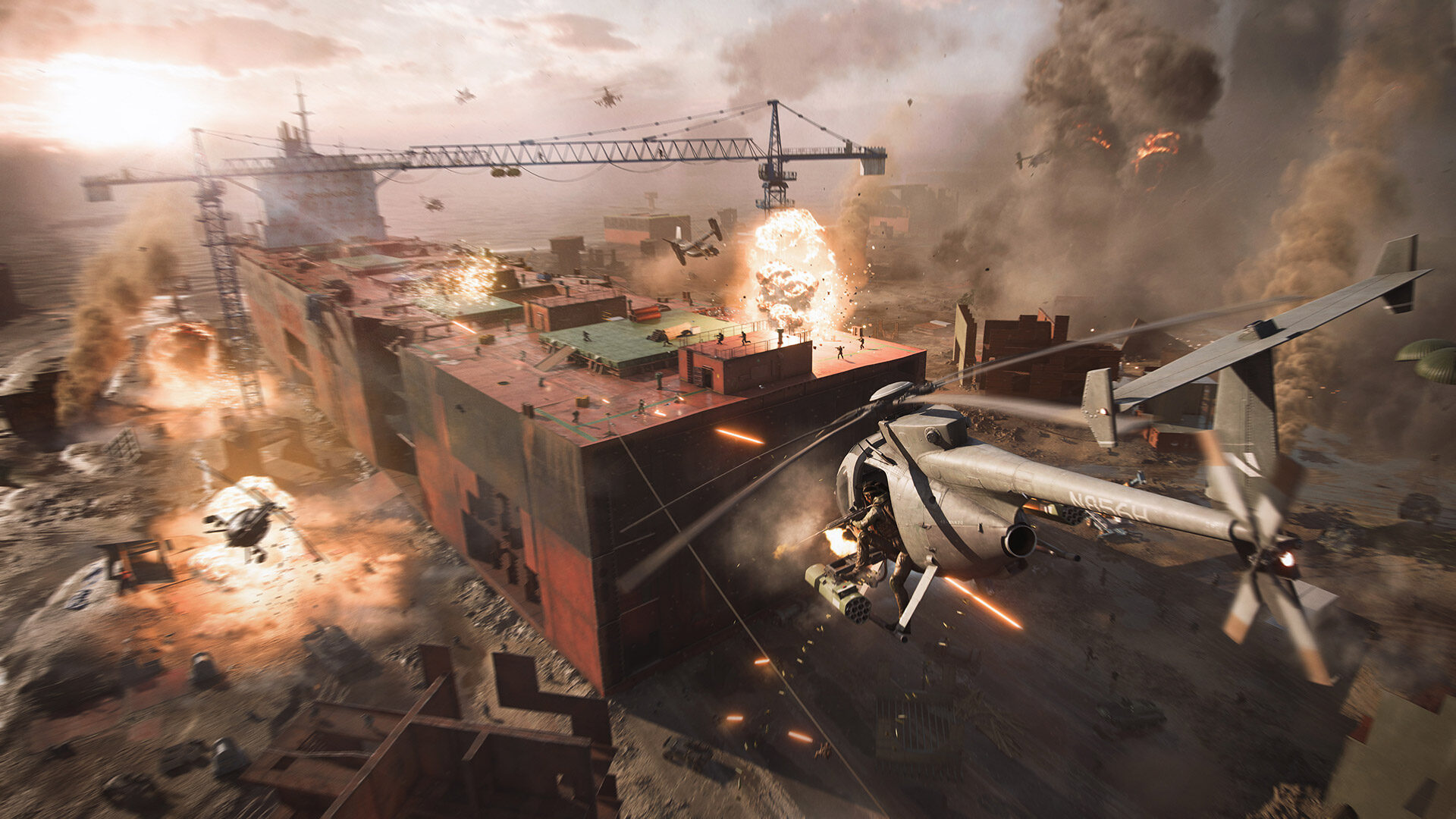
In a world…
It’s appropriate that Battlefield 2042 is set a couple of decades into the future, because it leaves big chunks of its past behind in order to create a more unlimited sense of freedom.
One of the most obvious omissions is a single-player campaign. Compared to its rival, Call of Duty, Battlefield’s campaigns have rarely stood out as anything other than obligatory inclusions. Sure, the Bad Company spin-offs at least featured protagonists with personality, and the Battlefield 1 War Stories achieved the novel effect of turning World War I battles into action-packed thrill rides, but their narratives weren’t iconic, maybe even essential, in the way that, for example, Call of Duty 4: Modern Warfare’s campaign was. Yes, Battlefield 3 had some standout moments, but its most memorable mission, “Going Hunting,” is basically just Modern Warfare’s “Death from Above” done four years later.
It’s kind of ironic that DICE decided that Battlefield 2042 should be the first game since the series debuted on consoles to forgo a single-player campaign, considering it has the richest and most interesting backstory of any game in the series other than Battlefield 2142. Essentially, natural disasters and a global blackout have led to the collapse of pretty much every world government besides the United States and Russia, and those forced to flee their home countries to find shelter and safety are known as No-Pats. As shown in the “Exodus” trailer, a mysterious figure named Oz sets off a chain of events that lead to No-Pat soldiers getting stuck in the middle of a proxy war between the two remaining superpowers. It’s probably the richest narrative world that DICE has ever created, but it merely serves as the context for the game’s multiplayer, rather than the setup for a campaign.
In lieu of any single-player story, Battlefield 2042 consists entirely of three distinct multiplayer experiences: All-Out Warfare, Hazard Zone, and Portal. All-Out Warfare is essentially 2042’s traditional multiplayer experiences of Conquest and Breakthrough, although with 128-players on Xbox Series X/S, PS5, and PC; Hazard Zone is a squad-based, elimination-style mode where you need to extract with data drives; and Portal is… well, I’ll get to Portal later.
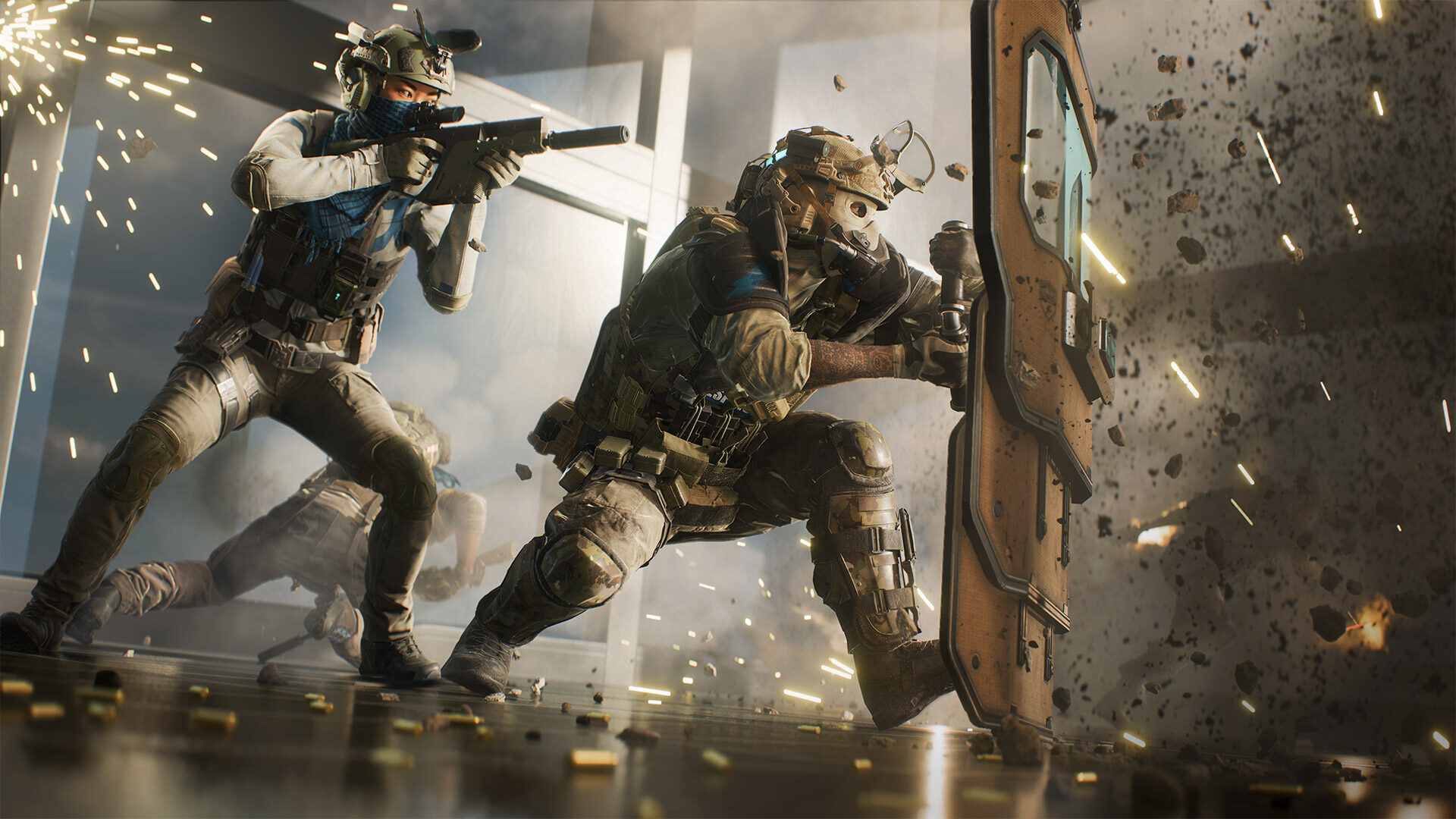
Class act
Another irony of Battlefield 2042 is that its most traditional experience, All-Out Warfare, proved to be its most controversial prior to the game’s launch. That’s because it replaces the series’ tried-and-true class system—some variation of Assault/Engineer, Medic, Support, and Recon characters—with the new Specialist system. Instead of four generic classes with specific gadgets and weapons, players can now choose among 10 Specialist characters, each with their own unique trait and specialty gadget. More importantly, while each Specialist is classified as playing a role similar to Battlefield’s previous classes, players can choose any weapon and any secondary gadget they want.
It’s understandable why a vocal chunk of the community would look at this idea on paper and absolutely lose their minds like they have for the last several months. The four-class system, at least in theory, created a rock-paper-scissors balance where some classes were good at some things, other classes were good at other things, and no class was objectively stronger than another. Having to balance 10 separate Specialists who can use whatever weapon they want seems like a nightmare, right?
It’s a simple truth that the Battlefield community, in general, has absolutely no idea what it’s talking about. The class system has never achieved a true balance—there have always been the stronger classes and the weaker (i.e., Support) classes. In Battlefield 4, the Medic (which was called the Assault back then) had access to both the best guns in the game and the items that allowed them to heal themselves and teammates. In Battlefield V, the Medics once again had access to some of the strongest weapons in the game, and they could also heal themselves, which was especially powerful given that game’s attrition system. In Battlefield 1, the Scout class made up half of every team because of the one-shot “sweet spot” mechanic.
The other myth about Battlefield is that the traditional class system leads to more teamplay because every player knows what their specific role is, and that 10 separate Specialists who can use whatever secondary gadgets they want will kill teamwork. And yet one of the most prominent memes in the community is how often kill-hungry medics will simply walk over their downed teammates in pursuit of the enemy rather than perform their duties and revive their allies. Another is how difficult it is to get Support players to drop their ammo boxes, when that is literally the only team-related task they ever need to perform.
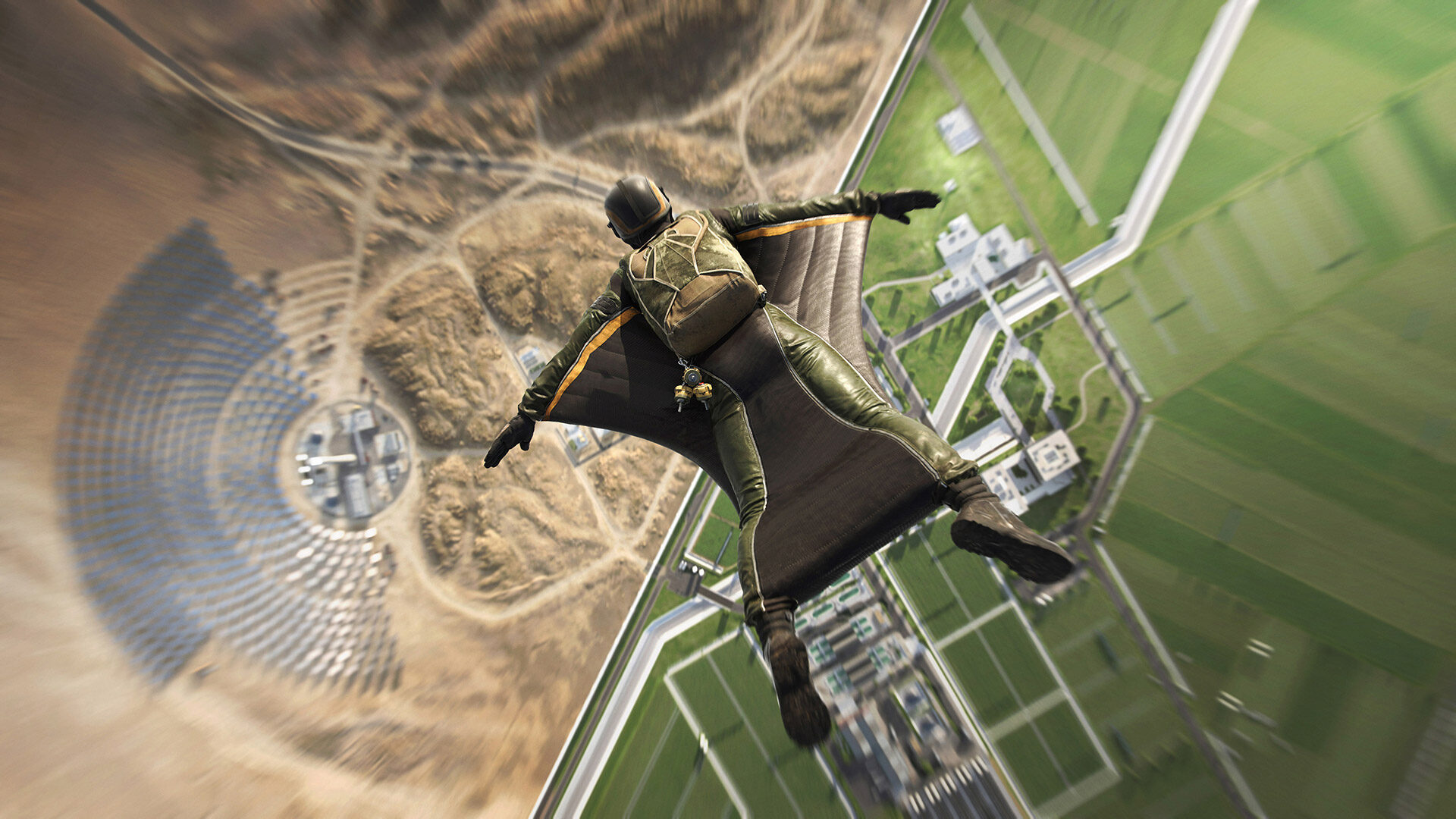
I’m not going to say that the Specialist system improves teamwork. It doesn’t. But, more importantly, it doesn’t disrupt the opportunity to take that initiative if you wish to do so. When it comes to teamwork in Battlefield, the systems that DICE gives to the players have never and will never influence the players to do what they’re supposed to do. Instead, they let the true heroes—the people who actually play their roles in Battlefield games—do the work. And that’s really the point: If you want to heal, resupply, revive, or repair, Battlefield 2042’s Specialist system still gives you all the tools to do so. There’s nothing stopping you from playing the team roles that Battlefield has always let you play. But the choices that team players now have to create their ultimate teamwork-friendly loadout are more robust than ever. It’s almost as if DICE stopped designing around the community it wants and designed around the community it has.
What the Specialists do offer are completely distinct play styles with gadgets that are genuinely fun to use. Whether it’s MacKay’s grappling gun, Paik’s EMG-X scanner, Sundance’s wingsuit and smart grenades, or Angel’s loadout crate, every Specialist gadget has its place and creates gameplay opportunities that more or less weren’t possible in previous Battlefield titles. If Battlefield’s class system had to die so that I could wingsuit around a map, land behind enemy lines, plant a spawn beacon for the rest of my squad to keep up a sustained flanking attack, and throw a grenade that tracks enemy helicopters, then so be it.
The only gripe I have with the Specialists is that it can occasionally be hard to tell the difference between friendly and enemy soldiers. However, since the open beta, DICE has made considerable improvements to 2042’s UI so that it’s almost always obvious when a player is on your team, as the blue dot above their head is generally easy to see. Still, it would have been better if DICE had created a different hue for character uniforms, depending on which faction they’re on. There are plenty of cosmetics and skins to unlock for each Specialist, but none of them depend on which side you’re fighting for. Even a simple red-versus-blue situation would have worked. The worst casualty to this system is that it makes playing without certain HUD elements for a more immersive experience—one of the great joys of any Battlefield game—practically impossible, unless you want to waste a ton of bullets firing on friendlies.
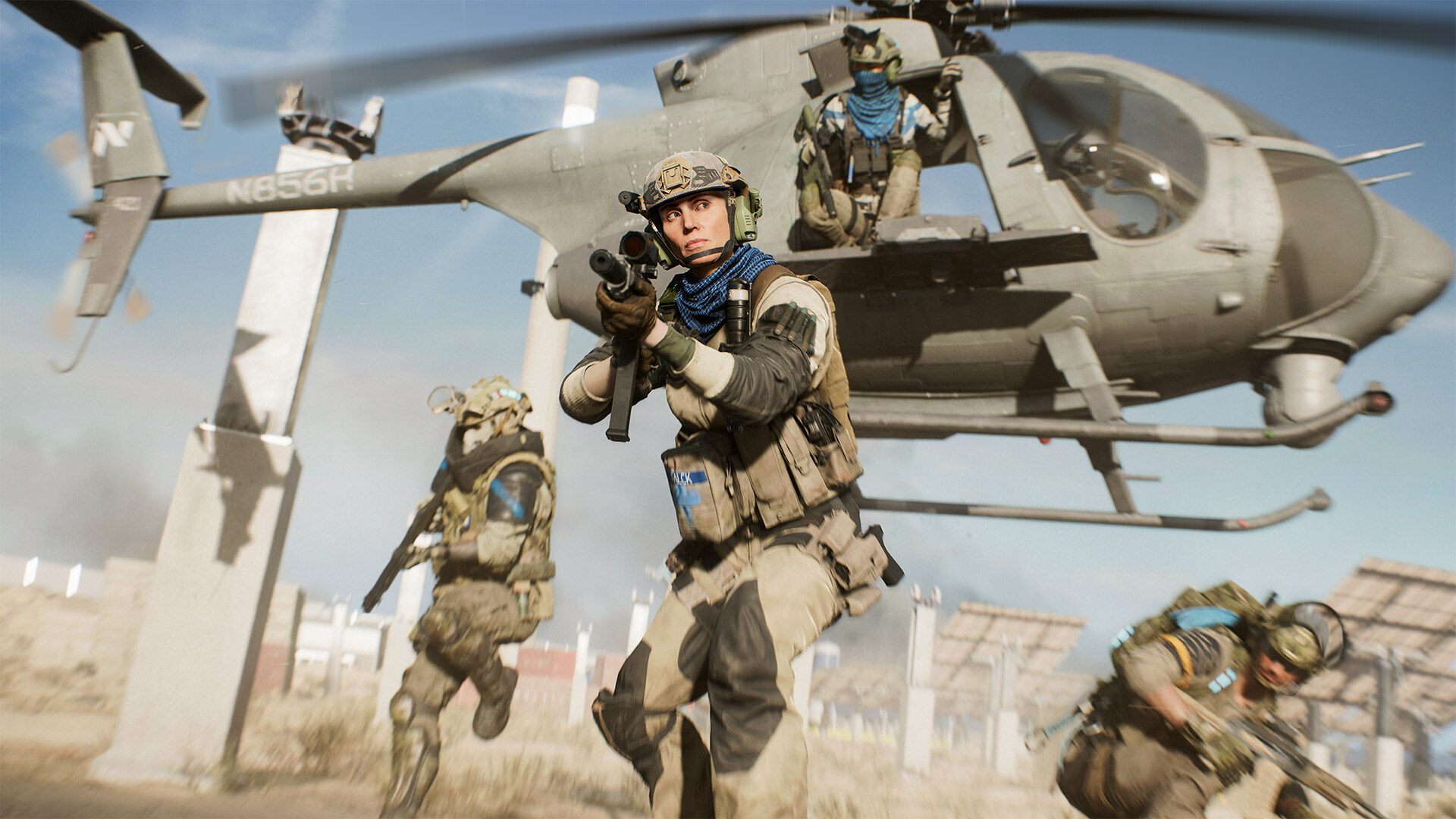
Locked and loaded
In tandem with the new flexibility of the Specialist system, creating custom loadouts and coming up with novel combinations of weapons and gadgets is straight-up fun. Because we had every weapon, gadget, and Specialist unlocked from the get-go for the review event I attended, I was able to see the full breadth of options that 2042 offers at launch, and I still feel like I barely scratched the surface.
Some of my loadouts echoed classic Battlefield class archetypes—my “Classic Support” build featured an LMG and an ammo box—while others were a bit more creative. My “Falck’s Specialty” loadout, named for the game’s medic Specialist, featured an armor plate, a shotgun, and smoke grenades so that I could get into the action and safely revive teammates. However, this loadout would have worked just as well with Dozer, an assault Specialist whose main gadget is a ballistic shield that lets him aggressively push enemies. When creating loadouts, I didn’t just feel like I was making a simple choice based on what weapon and gadget I wanted to play with; I felt that the game was giving me tools to creatively problem solve, depending on the situation my team found itself in.
What makes Battlefield 2042’s loadout system so engaging is that it’s flexible. If you don’t like the weapon you have in the loadout, you can swap it for another one that best suits your current situation. Same goes for your gadget. You can do so from the Collection screen in the main menu, where all the gear you’ve earned lives, but you can also change your loadouts during a match when on the spawn screen.
Another new Battlefield 2042 gameplay addition is its Plus Menu, which lets you select three sights, ammo types, underbarrel attachment, and barrels to have available to change while in a match. Certain attachments can dramatically impact the way a weapon performs without pushing it outside the boundaries of its intended weapon class. You can, for instance, swap out your standard barrel and red dot sight for a longer-range scope and an extended barrel on an assault rifle to give you a little more range, but it’s never going to rival a DMR or sniper rifle for long-distance prowess. Some Battlefield players might pooh-pooh the concept of not being fully tied down by the attachments you’ve put on your gun, but most players will appreciate the flexibility that the Plus System offers. The only catch is that once you’re in a match, you can’t change what three attachments per slot are available, so make sure you’re happy with your choices before jumping in.
All told, Battlefield 2042 offers 22 weapons at launch in All-Out Warfare and Hazard Zone (though there are considerably more in Portal). There are four SMGs, four assault rifles, two LMGs, three DMRs, three sniper rifles, three shotguns, and three sidearms. That might not sound like a lot compared to previous Battlefield titles, but those games had the bad habit of simply reskinning guns that performed exactly the same as other guns. The weapons in 2042 all feel completely distinct from every other one in their respective classes. Besides, it will still probably take a couple of days to earn every weapon, and several more days to unlock all of the attachments for each. I won’t dispute that the roster is slim compared to other games in the series, but at least the weapons that DICE has made available feel distinct from one another. More importantly, the gunplay is arguably the best in the series so far, and the time to kill actually feels pretty balanced right off the bat.
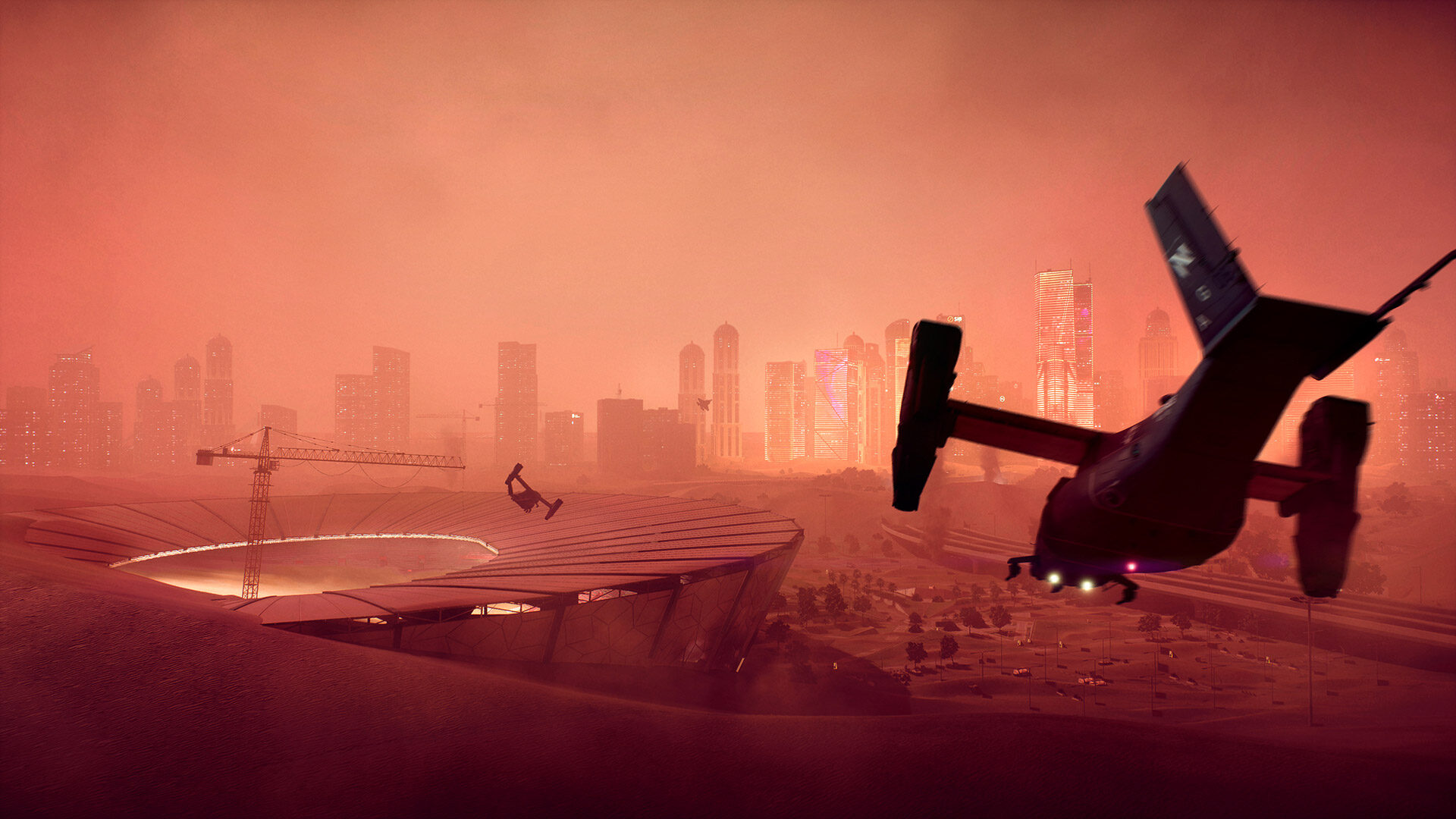
Maps and modes
None of these elements—the Specialists, the weapons, the loadouts—would matter much if Battlefield 2042 didn’t nail what matters most: the maps. Thankfully, 2042’s maps aren’t just some of the biggest in the series, but they’re quite possibly the best since Battlefield 3.
Not counting the six remade maps in Portal, Battlefield 2042 introduces seven new maps at launch: Orbital, Renewal, Discarded, Manifest, Kaleidoscope, Hourglass, and Breakaway. The fact that I typed all of those out without having to look them up speaks to how memorable each map is, each offering its own distinct experience. Kaleidoscope, for instance, is composed of slick skyscrapers and an expansive park in a dense urban environment. The beached freighter that acts as Discarded’s centerpiece could be a whole map on its own, and Manifest’s nighttime shipping yard setting is mazelike, claustrophobic and vertiginous.
Verticality is back in a big way on most of 2042’s maps, creating a more dizzying sense of scale and plenty of opportunities to take advantage of the game’s enhanced parachute system. Back, too, are complex points of interest to host extended, dynamic firefights. Highlights include the stadium in Hourglass, the rocket manufacturing facility in Orbital, and the border wall on Renewal. The points you are trying to capture actually feel like they have a strategic significance—something that the last couple of Battlefields lacked, despite taking place during both World Wars.
Larger maps also mean more distance to cover, and that’s where Battlefield 2042’s vehicle call-in system comes in. Though it rarely worked correctly in the beta, the system worked flawlessly in the build of the game we played for review. You can call in any of the game’s three transport class vehicles, including the hovercraft, as well as Ranger, the dog-like drone that follows you around and shoots at your enemies. If you find yourself walking too much, then you’re probably just playing the game wrong, because the call-in system is your best friend.
As far as the other vehicles are concerned, I only really feel qualified to talk about the land-based ones. The tanks in Battlefield 2042 feel good; they’re basically a mix of Battlefield 4 and Battlefield V’s armor. They retain the same aiming system from BFV but they have similar controls and weaponry as in BF4. They feel strong, but not overpowered, as infantry players have more tools than ever to disrupt them, including EMP grenades, Casper’s drone, and Rao’s ability to hack enemy armor. Despite the fact that anyone can bring a rocket launcher with them, I never felt like I was overwhelmed with infantry trying to take me down. Tanks felt… good, as did the anti-air vehicles. I genuinely had no complaints, though I’m sure that will change as better tank players discover their hidden advantages and idiosyncrasies.
As for the aerial vehicles, I honestly have no idea how to judge them, other than I never felt like I was getting harassed by choppers. They’re fun to fly, and they feel a little better to use than they did in the beta, but I’m not a dedicated pilot so I can’t speak to how well they’re balanced. Still, the fact that choppers, jets, tanks, and transport vehicles can all exist within the same concentrated spaces on Breakthrough and never feel completely overwhelming probably speaks both to the balance in their design and the way that the maps are laid out.
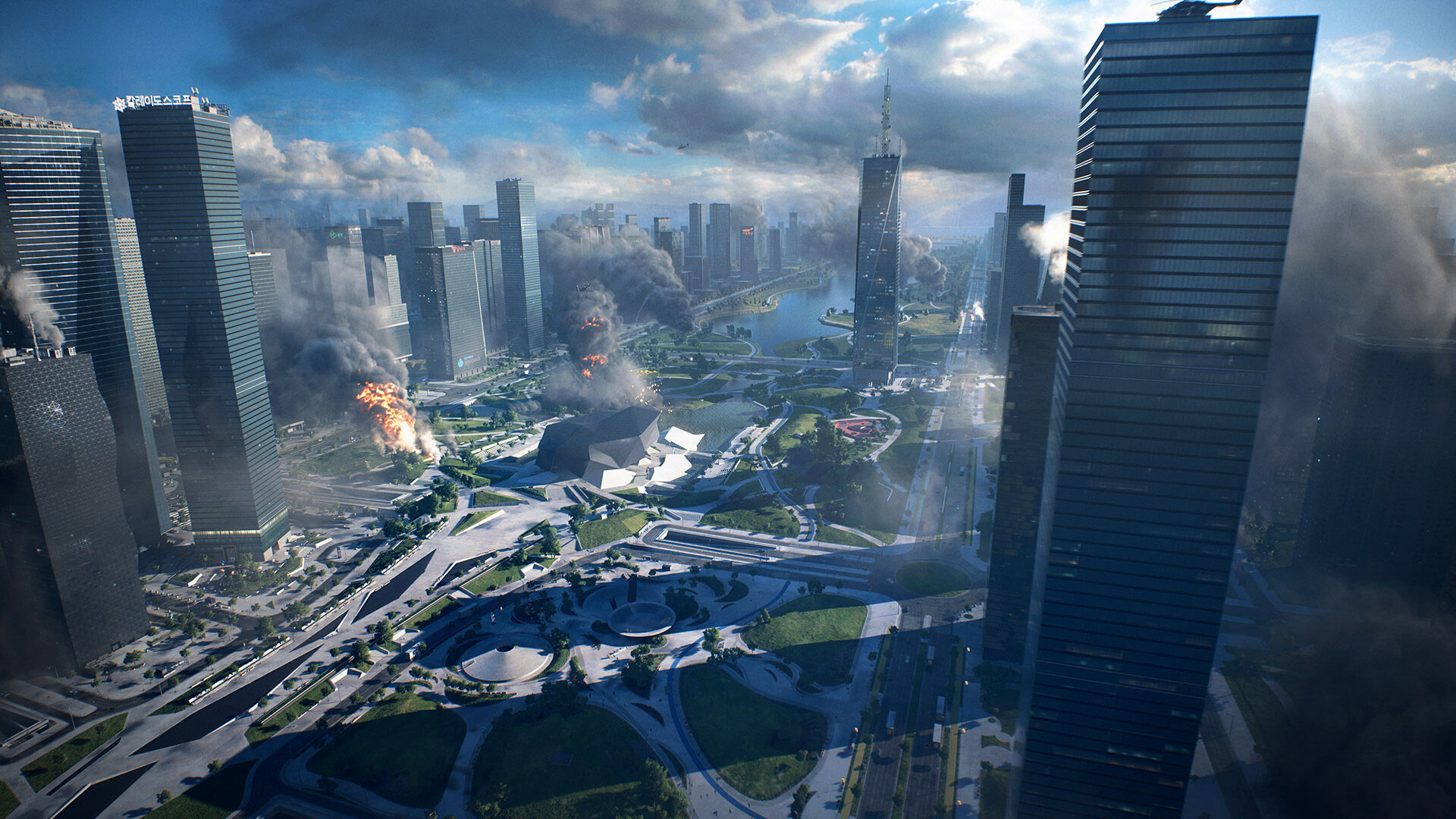
You see, the main thing that 2042’s maps offer is space. For my money, Battlefield: Bad Company 2—and Rush mode in that game specifically—is still the best that Battlefield has ever been, and that’s because its map design and player count gave players room to breathe and move. Operations in Battlefield 1 and Breakthrough in Battlefield V both suffered from their maps having relatively little space, which meant more messy, cacophonous pile-ons and less articulation in the violence. More space means more room to move, to scheme, to advance. In Bad Company 2, space opened up for pockets of action, little skirmishes that contextualized the overall progression of a match.
Battlefield 2042’s seven All-Out Warfare maps somehow manage to balance the chaos of Battlefield 1’s maps with the room for sandbox experimentation and more intimate fights of Bad Company 2. This is most evident in Breakthrough, the now obligatory attack and defend mode where one team has to capture a sequence of sectors and the other team tries to stop them. The sectors in 2042’s maps give players a wide berth to get into interesting positions and create memorable moments. However, if you want to charge headfirst into the hellmouth, you can do that, too.
Breakthrough in 2042 is really something special with 128 players—there’s spectacle, there’s chaos, and there’s tactics in one package. Because of the increased player count, it probably won’t create the momentary interpersonal rivalries that would pop up in Bad Company 2’s Rush. But to me, in regard to the gameplay opportunities it presents, it’s the most fun that Battlefield has been in a decade.
Conquest isn’t as successful in finding its stride in the 128-player landscape of 2042 as Breakthrough, but it still tries something new and hits more than it misses. DICE has made a big deal out of its new “clustering” strategy for making Conquest work with the enhanced player count, where instead of single capture points, there are sectors made of multiple capture points, and teams have to hold all the capture points to own that sector. When a sector has two or three points, it’s almost as if you’re playing a smaller game of Domination within the larger match of Conquest, and it can be really fun. Heck, you can spend entire Conquest matches in one sector, going back and forth with a couple of other squads, neither team fully capturing that sector.
But most of the sectors only offer one or two capture points, and this makes fighting over them significantly less interesting and dynamic. Where clustering should encourage players to spend time locking down and then defending a sector, not wanting to give up the ground you worked so hard to gain, the one- or two-flag sectors feel just as disposable as Conquest in every other Battlefield game makes them feel. It’s not that it’s unfun, because it still offers plenty of opportunities for experimentation and sandbox tomfoolery. It’s just harder to take seriously, much more scattered, less of a game mode and more of an excuse to goof around. Which, despite everyone wanting every multiplayer game to be “competitive,” is fine.

Highway to the Hazard Zone
The second piece of the Battlefield 2042 triptych is Hazard Zone, a new squad-based mode that attempts to deliver the essence of a battle royale experience without actually being a battle royale game. Stuck somewhere between Hunt: Showdown and Escape From Tarkov, Hazard Zone succeeds in providing a mode in a Battlefield game that truly requires teamwork, but it fails in presenting any real long-term stakes to keep players invested.
Each match of Hazard Zone takes place on one of 2042’s seven All-Out Warfare maps, randomly selected each time. Eight squads of four players (or six squads on last-gen consoles) are dropped into the map and must acquire as many data drives from crashed satellites as they can before extracting from the map. The catch is that there are only two opportunities to extract with data drives each match, meaning only two of the eight teams can actually get out with the maximum amount of reward.
Hazard Zone functions almost perfectly as a more competitive mode in 2042. Coordinating with your squad is of the utmost importance, even during the match’s preparation phase. Since each squad can only have one of each Specialist, you’ll have to decide who will play which role and what Specialists will work best for the map and specific deployment point your team gets. Communication on the ground is key as well, since players can quickly get knocked out of the match, and a team with even one less player will find itself at a disadvantage. Though, like plenty of battle royale games these days, you can use a redeploy beacon to get a teammate back into the game. Best of all, matches only last 20 minutes at most, so you’re in and out and onto another adventure within no time at all. The narrative surrounding Hazard Zone—the maps and graphics and voice over lines that contextualize the mode—is almost enough to keep players invested, especially if they’re already engaged in 2042’s overarching fiction.
There’s something missing from Hazard Zone, but it’s hard to put my finger on what exactly that is. The main point of each match is to extract with as many data drives as possible in order to earn as many dark market credits as you can. Dark market credits allow you to purchase stuff like weapons from your personal Collection, gadgets, and perks before each match. These items you purchase are supposed to make it easier to survive in the Hazard Zone so that you can extract more drives and earn more credits, to buy the things that will help you in your next match, and so on, and so on.
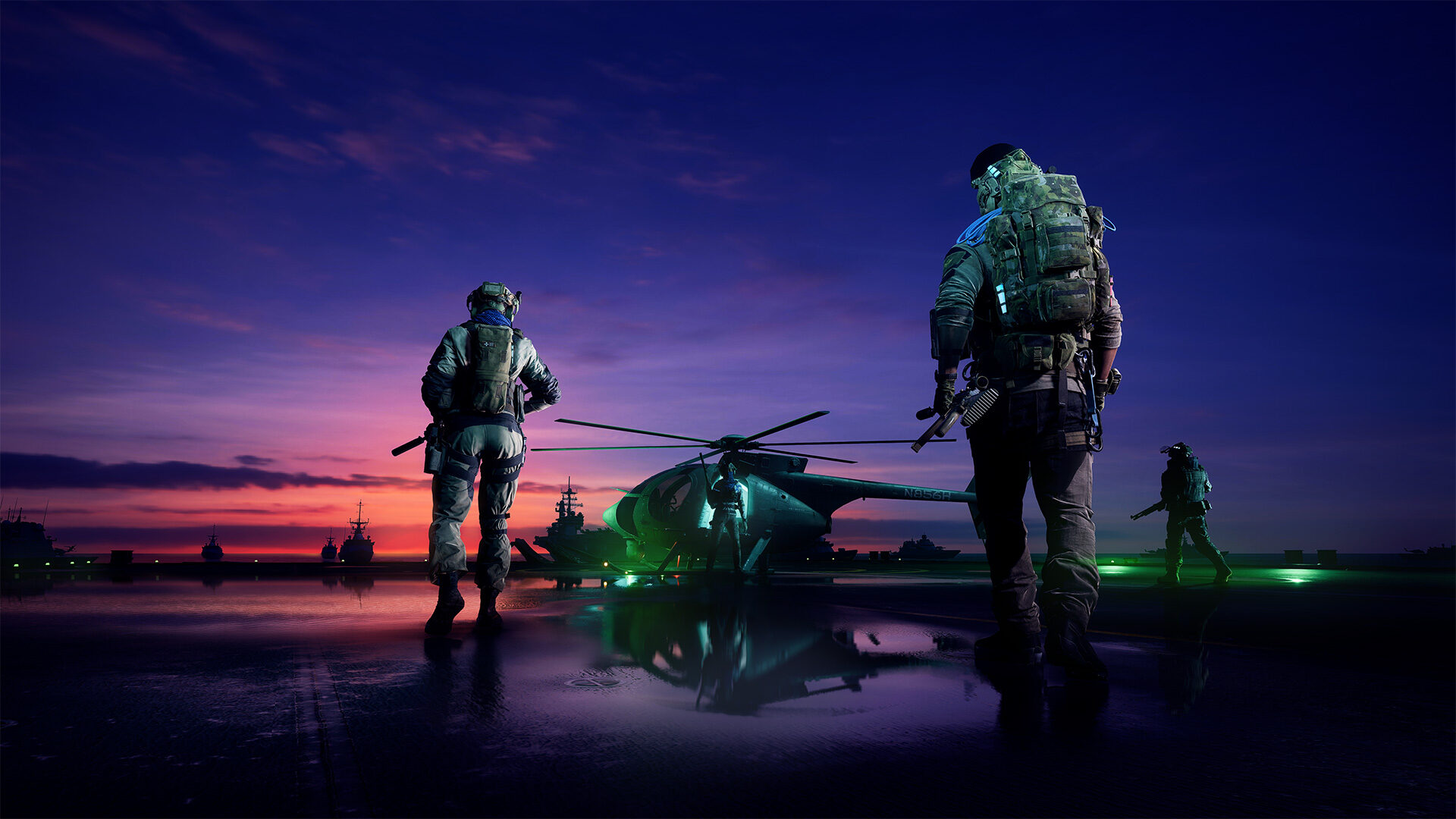
I’ve asked myself why Hazard Zone seems so pointless as a mode, when every other mode is just as pointless when you really think about it. And I don’t mean every mode in Battlefield games—I mean every mode in multiplayer games in general. Obviously, the goal of every multiplayer mode is to win. But what do you ever really win? In a battle royale mode, you get to be the last player standing. In team deathmatch, you get to have earned the most kills. They’re both equally meaningful and meaningless, depending on the person. So why does Hazard Zone feel so meaningless without feeling at all meaningful?
I think part of it has to do with how you win. You don’t have to kill all the other players in the match. In fact, you might not even run into other players. Though it’s unlikely, you could extract with data drives without even running into another player-controlled squad. Not beating another player in a multiplayer game but still winning just doesn’t make sense. There is zero sense of accomplishment, and zero stakes. You can still earn credits for killing AI-controlled enemies, so you will most likely never walk away without having gained something.
What Hazard Zone really needs is an incentive to win. Whether that’s a ranked mode or more substantial cosmetic rewards, that’s up to DICE. But something is missing from the mode in its current iteration, and DICE needs to figure out what that is. The narrative context surrounding Hazard Zone is great; the prep phase, the action, the atmosphere all create a truly compelling experience within 2042’s sandbox framework. It just needs that one thing that will make players actually want to choose it over the game’s other modes—especially Portal.
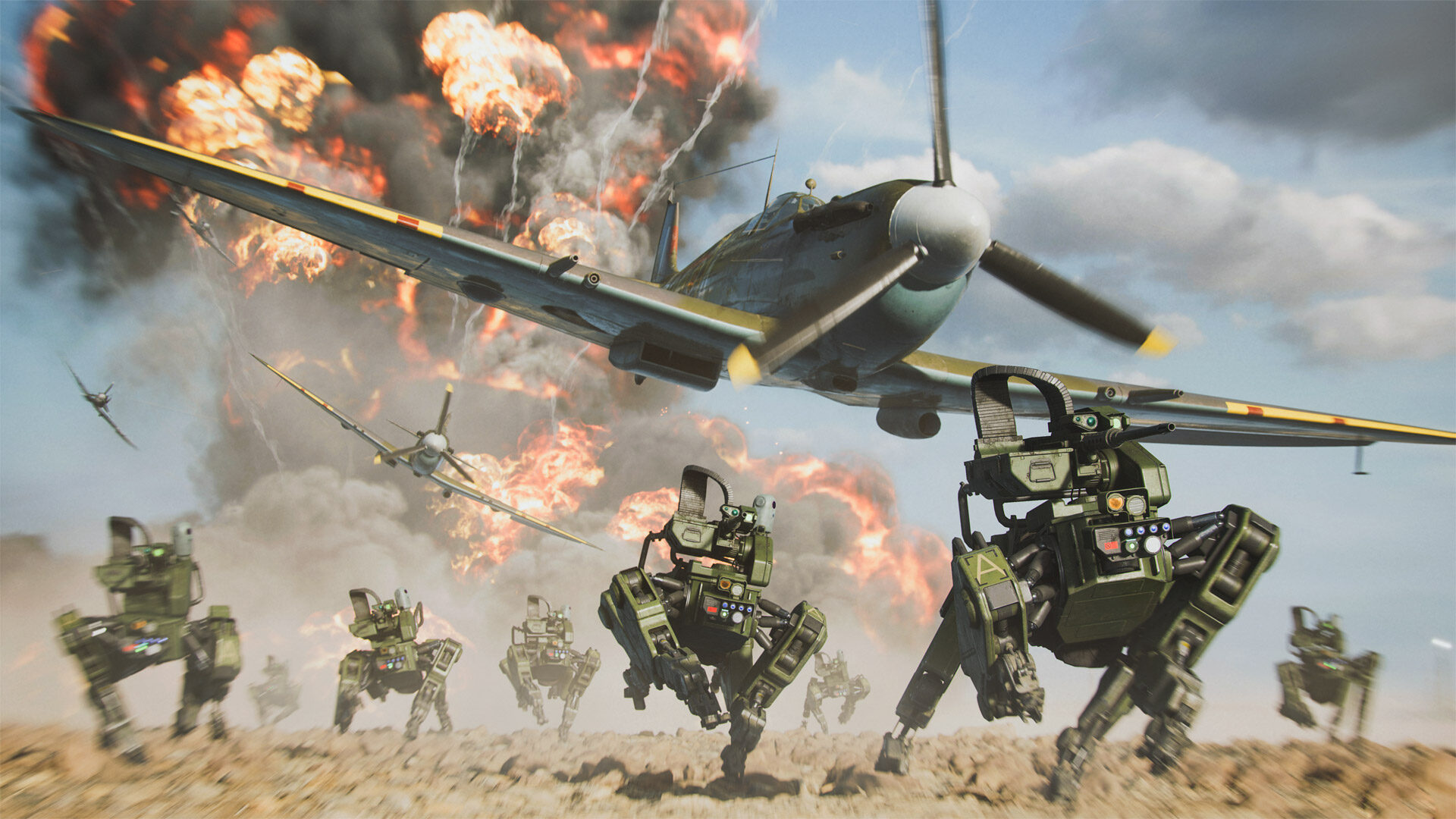
Portal to the Past
Battlefield Portal will undoubtedly be the most exciting thing about 2042 for a lot of players, especially longtime fans of the franchise. Portal lets you create custom Battlefield modes, browse and play others’ custom modes, and experience remade versions of six classic Battlefield maps, as well as the weapons and classes associated with them. Just being able to play standard Rush on updated versions of Bad Company 2’s Valparaiso and Arica Harbor will be enough for some players, but Portal is much more than that.
In order to fully judge Portal, I feel like I have to break it down to its most basic parts. First, let’s talk about the remade versions of the six Battlefield 1942, Bad Company 2, and Battlefield 3 maps that are available in Portal (along with all seven of 2042’s new maps) at launch. To say that Ripple Effect Studios (the EA studio formerly known as DICE LA that led development on Portal) completely nailed the maps would be an understatement. The designers who have updated these six maps for the latest version of the Frostbite engine have managed the tricky balancing act of retaining the spirit and gameplay of these maps while also modernizing them just enough to make them feel new again.
Valparaiso and Arica Harbor in particular are stunning, and even the relatively recent (at least in terms of what engine they debuted on) Noshahr Canals and Caspian Border benefit from the more modern tech. What’s more impressive is how these maps somehow retained the same gameplay moments. I felt like I was having flashbacks on Arica Harbor as I watched the attacking team round the bend and make their way down the hill in that map’s second sector. Players were using the same flanking routes, the same sniper spots, the exact same tactics that they used 11 year earlier. The only map that felt like it could use a bit more modernization was El Alamein, as the emptiness of its desert felt like a stark contrast to everything else in 2042. However, I don’t have the same nostalgic attachment to 1942 as I do to Bad Company 2, so adding too much to El Alamein might have completely ruined the spirit of what the original version of that map was trying to do.
The classes tied to each of the three classic games have also received an update, though their inclusion in Portal left me feeling just slightly underwhelmed. Don’t get me wrong: It was great to play with a (fairly generous) selection of the weapons and gadgets that appeared in those games, but there was still something slightly too modern, too Battlefield 2042 about them.
Part of the problem is that the UI doesn’t change between All-Out Warfare and Portal. The HUD, the loadout menus, everything looks exactly the same across all three experiences. While I like the UI and HUD in 2042, navigating it to find the right weapon, attachment, and gadget for each title’s classes felt a little cumbersome compared to their original versions. It’s certainly not enough to ruin the experience of playing as, say, a 1942 anti-tank soldier or Bad Company 2’s red-beret-wearing medic, but sticklers for detail might feel a little disappointed that the original versions of the games’ respective UIs and HUDs are missing. I was looking forward to only being able to judge my health as a Bad Company 2 character by how bloody my screen was, but the HUD includes the same health bar no matter who you’re playing as.
But, honestly, that’s just me being picky. What’s more important is that even the most basic recreations of classic modes on classic maps featuring classic characters is a blast, even with some of the series’ more modern updates, like being able to mantle through a window as a 1942 or Bad Company 2 soldier (yes, I’m so old that I remember a time when you couldn’t do that in a first-person shooter). And it isn’t just nostalgia: The weapons, maps, and classes from the earlier Battlefield games, now updated with a modern coat of paint, can stand up against any other map from any other modern shooter, Battlefield or not. The maps included with Portal at launch are literally some of the best multiplayer maps ever designed, and now I can say definitively that it isn’t my nostalgia speaking.
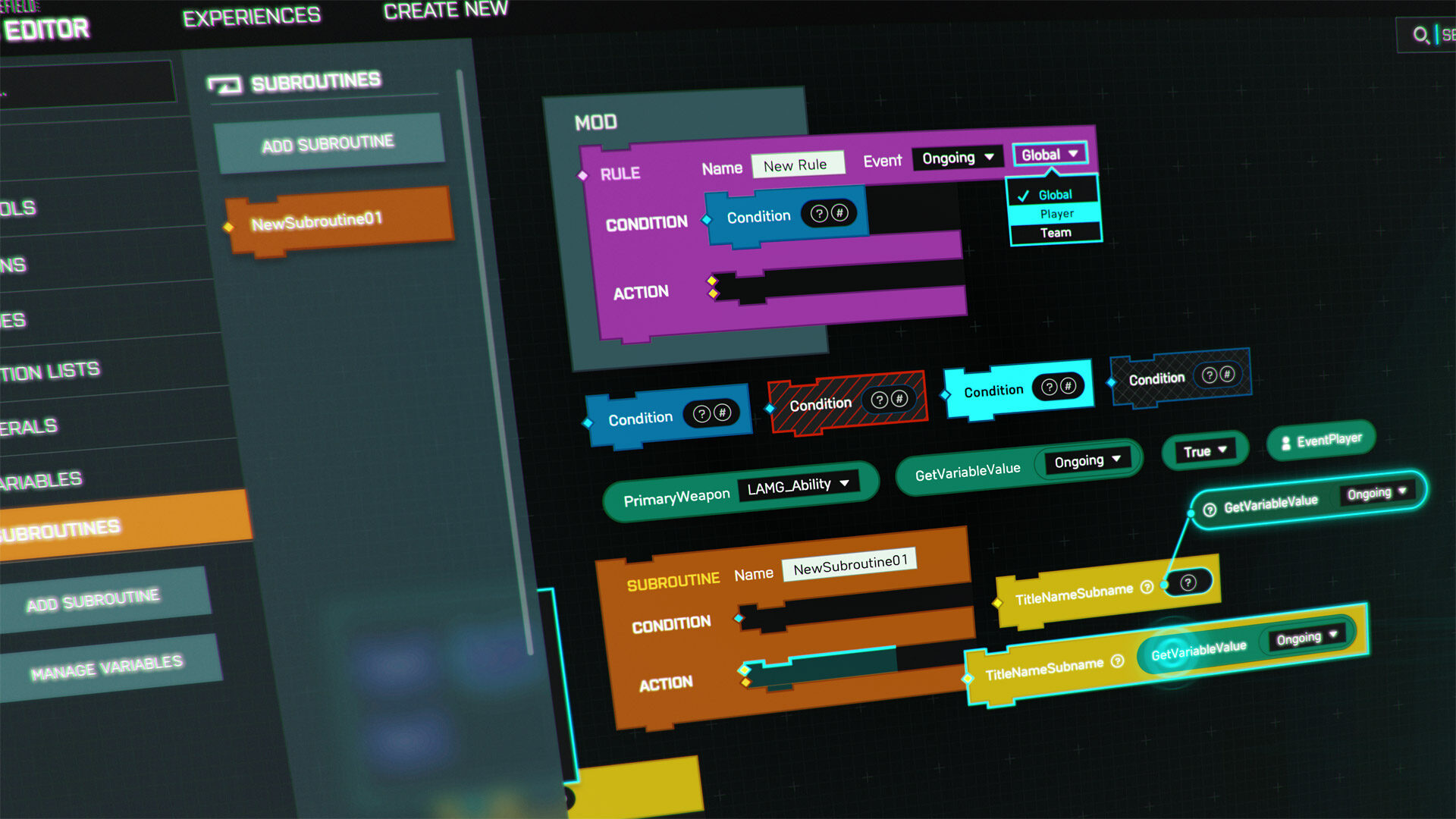
Customize it
The updated, classic maps are only a small piece of the Portal puzzle. The main draw is that Portal lets you create, play, and share custom Battlefield modes based on 2042’s engine.
Creating custom modes is basically a two-step process. Through Portal’s browser-based modification tools, you can go through a series of predetermined attributes that you can adjust using convenient sliders. The process is essentially this: You pick a starting game mode from Conquest, Rush, Team Deathmatch, or Free-For-All; determine basic rules like player count per team, time limit, and damage values; and then choose what game each team’s soldiers come from, what weapons are available, and so on. You can even tweak things like movement speed, whether players can go prone, or even whether players can aim down the sights—and these are even adjustable per team.
But that’s just the beginning of the customization process. If you choose Team Deathmatch or Free-For-All, you can also change the rules of the mode in the game’s visual logic editor, which is so easy to use and so difficult to comprehend that even thinking about trying to make something in it gives me anxiety.
To show off what players can create using the logic editor, DICE had us play a couple of wacky modes. The first mode, VIP Fiesta, tasked two teams with killing the other’s randomly assigned VIP 15 times. After the VIP died, a new player on that team took over as VIP, and so on. The catch was that each time you died, VIP or not, you came in with a new, randomly assigned loadout. Another mode was basically a free-for-all deathmatch with increased player speed and increased respawn times. But the weirdest mode we played was a free-for-all deathmatch in which everyone had only rocket launchers. The catch to that one was that, in order to reload your rocket launcher, you needed to jump five times.
VIP Fiesta and the “jumping for rockets” (not “rocket jumping”) deathmatch modes perfectly illustrate Portal’s promise and limitations. Both modes were created using the visual logic editor, which allows you to make rules that don’t already exist, but it’s also limited to just Free-for-All and Team Deathmatch. Ripple Effect stated that introducing the logic editor into the already structured objective-based modes like Conquest and Rush would essentially break those modes, but that excuse falls flat for me. Isn’t the whole point of Portal to let players experiment, even if the end result is a total disaster? Doesn’t the very concept of preventing players from doing so go against the spirit of the experiment altogether?
Beyond that, even the more basic modifiers have weird limitations to them, though it’s hard to tell how dramatic those limitations are without having played the matches I’ve made with them. The movement speed modifier doesn’t seem to go as high as I’d like, but I won’t know what a 1.5 movement speed multiplier actually even looks like in-game until it launches and I can test out my own creations. I found it disappointing that the maximum amount of enemy AI I can have on one team is 60 when, after reserving the space for 8 human players, I should have 120 open slots on the server.
But maybe I’m getting ahead of myself when it comes to Portal. Even before Battlefield 2042 has launched, I’ve already created five or six modes using just the base customization options that I can’t wait to play. And that’s without even teaching myself how to use the logic editor. When you factor in the tools that Ripple Effect has included that will allow players to share their creations with one another, and the potential for this to lead to a real grassroots community of creators popping up around the mode, it’s hard not to be impressed by what’s already here.
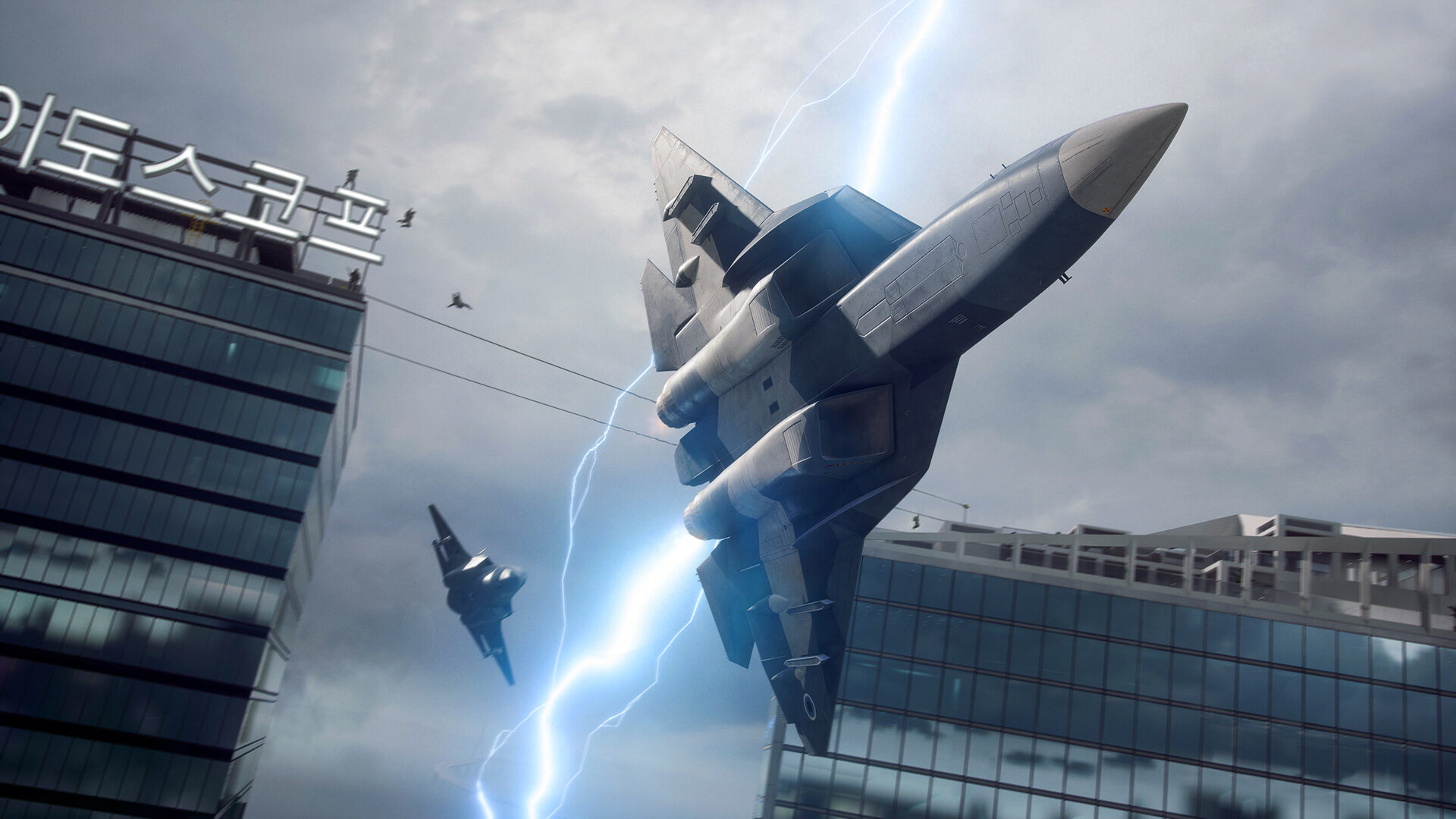
All the small things
Considering how massive Battlefield 2042 is, it’s not surprising that there are some small, nagging issues that DICE still needs to address.
While the build of the game I played for review (which is the same as the early access build, which is even less updated than the full release build) fixed most of the bugs from the open beta, I still encountered a few issues. Sometimes, my character seemingly desynced, resulting in me not being able to aim down the sights or have any of my bullets register. A bug that prevented players from being able to revive downed teammates also seemed fairly common among the reviewers. There was also a strange bug that made players way out in the distance look like they were doing a cactuar impression when running.
I also experienced several bugs with my controller, some of which appear to have been caused when I switched to the alternate button scheme. Issues like not being able to cut my chute or ducking when trying to switch my variable sight persisted during the entire review event. Other times, I wasn’t able to switch which character I wanted to play as, though this only seemed to happen in Portal. While I was playing the PC version of the game, it was worrying that playing with a controller presented some rare but substantial issues.
Even beyond bugs, there were a couple of design decisions, mostly revolving around the UI, that I just didn’t like. While enemies had health bars over their head, I still wish that the game told you how much damage you were doing per shot by rewarding you points—though it’s possible that DICE didn’t want players to earn XP per damage amount. Still, that’s a fair bit of information that is just now missing from the Battlefield experience. The lack of a traditional scoreboard was also somewhat strange, though it did reinforce the idea that playing for points isn’t as important as playing for fun. I definitely felt less stressed out and more engaged without checking the scoreboard and comparing myself to other players every 10 seconds, so maybe that’s a good thing after all.
Finally, there are just a couple of readability things that seemed off. For one, I sometimes wasn’t sure exactly what I was hacking as Rao, one of the Specialists. You could seemingly hold down the button and successfully “hack” something without even aiming at something hackable. And Paik’s EMG-X scanner had a cooldown, but it wasn’t clear exactly when the cooldown was finished and when I could use the scanner again. Given the controversy surrounding that Specialist, it’s possible that DICE was still tweaking her right up to the review event.
But really, the only real issue I had with Battlefield 2042 on a fundamental design level was a lack of meaningful destruction in each level. While I understand that the scope of the game already presents certain processing constraints, there were so many structures that I felt I should be able to destroy, walls that were begging for a blasting, that were simply static structures. I get that you can’t bring down every building, not just because it would crash the game but also because you need to have good level design. Still, the fact that the tornado doesn’t tear down any structure that’s stuck in its collision course definitely blunts the effect of what is easily one of the more awe-inspiring aspects of the game.
Oh, right: There’s a tornado
Until I typed that last sentence, I’d completely forgotten to write about the tornado and the other new weather effects in the game. The short version is this: They’re great.
What I love about the tornado is that DICE resisted the temptation to make everything revolve around it (not literally). When the tornado shows up, it adds a dynamic layer to the match, especially when it’s making a beeline directly at the point or sector you’re trying to capture. It shows up rarely enough that it doesn’t get boring, but often enough that players no longer run straight at it. It becomes an element in the game, an Act of God interfering with the more destructive acts of humanity. You can even use it strategically: Once, the tornado showed up in the middle of a Hazard Zone match, and my squad used it to quickly travel across the map and ambush a team that was trying to extract.
Other weather events like the sandstorm on Hourglass are more notable for the impact on the game’s atmosphere rather than its gameplay. As I mentioned earlier, each map has its own feel, its own style, making them seem more diverse than they already are. The weather effects simply add visual value to what is already there. Truly, every match I played during the review event felt like a new and refreshing experience.
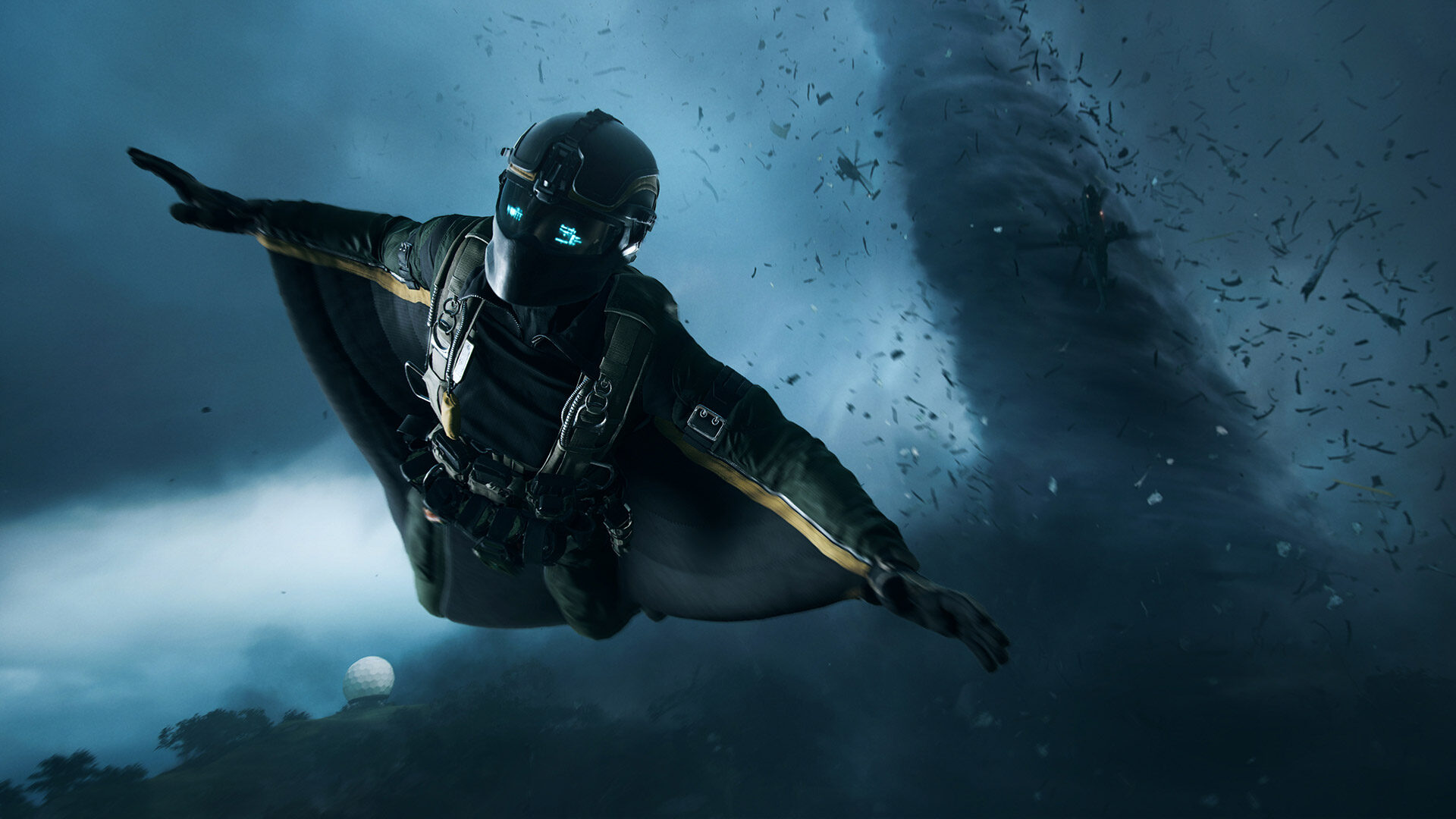
Early days, but a promising future
Battlefield 2042 is a massive undertaking in so many ways. It flips the series’ traditional formula on its head while still managing to retain the spirit of what makes Battlefield special in the first place. It tries something new with a more competitive, team-based mode. And it gives players an entire platform to create their own Battlefield modes. It includes seven new maps, six remastered maps, over 75 weapons and gadgets, and vehicles that span a century—and it wraps all that up in one convenient package.
Given DICE’s track record, whether or not Battlefield 2042 will launch without any extensive issues is yet to be seen, so consider my final score with an asterisk. Besides, a three-day review event doesn’t compare to the years I will inevitably spend playing this game, and it feels impossible to fully grasp everything that 2042 has to offer in such a limited time frame. Specifically, while the game’s overarching progression system, which lets you unlock weapons, gadgets, and Specialists, seemed fairly balanced, we already had everything unlocked from the get-go, so I can’t fully say whether that system works as intended.
What I can say is that Battlefield 2042 will go down as one of the most controversial games in the series’ history, but when has a Battlefield release not been controversial with fans? Hardline turned it into a cops-versus-robbers affair. Battlefield 1 brought it back to World War I, a conflict that seemed impossible to turn into a triple-A shooter. Battlefield V literally rewrote history and changed its fundamental gameplay more times than I can remember.
What matters most is that Battlefield 2042 feels like a real Battlefield game for the first time in about eight years, when BF4 gave us all of the tools for a modern military sandbox. But more than that, 2042 feels the most like Battlefield by leaving behind a lot of what the series is supposed to include. By ditching an aging class system and giving players the tools to make their own modes, 2042 offers so much freedom, so many options, and so many opportunities to create those memorable moments—the kind you and your friends talk about for years.
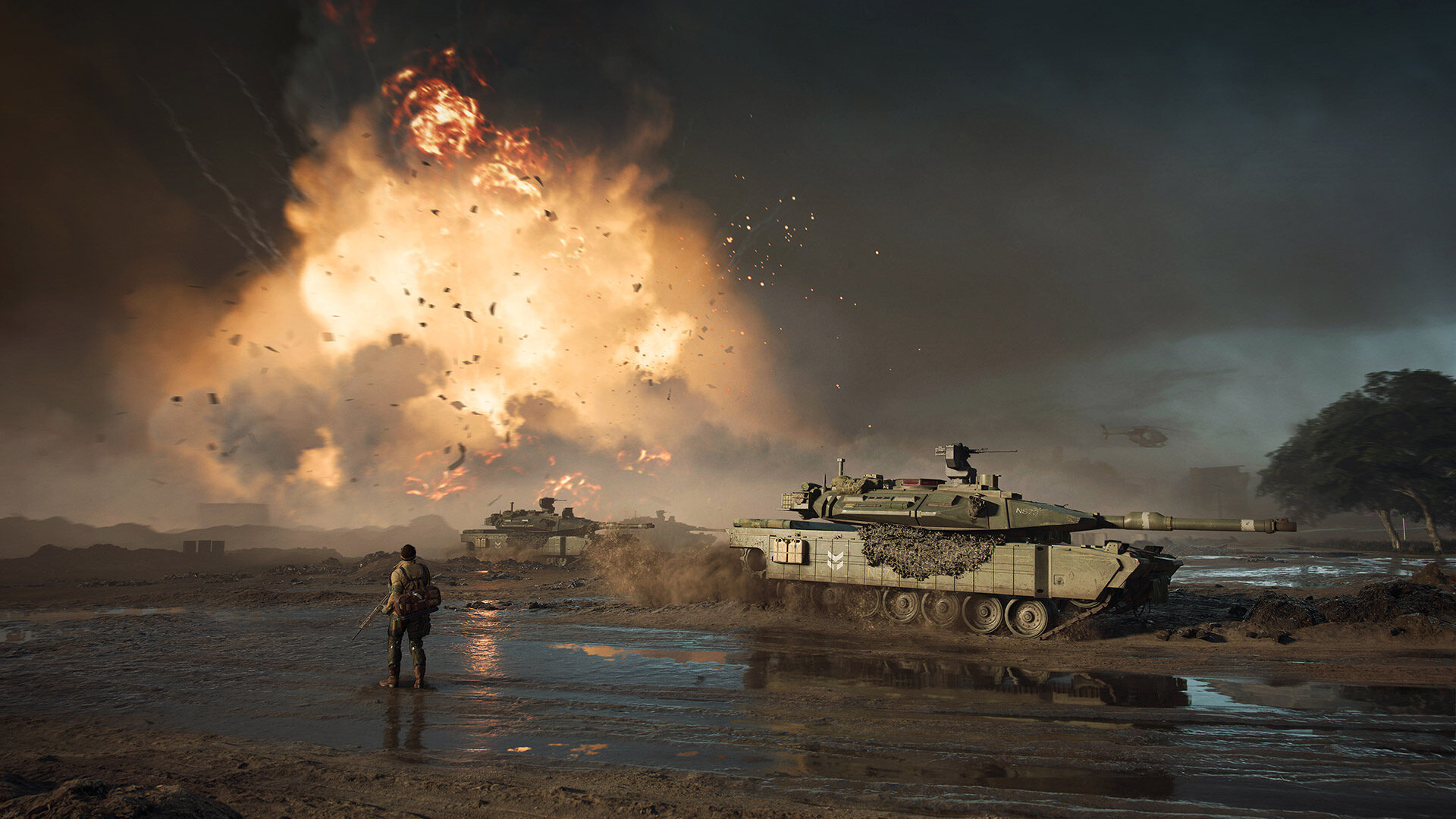
Images: Electronic Arts
|
★★★★★
Battlefield 2042 brings the sandbox back to the series in bold and controversial ways. The new Specialist system might seem like sacrilege at first, but it opens up gameplay opportunities that weren’t possible in previous titles. The massive, well-designed maps offer plenty of room for experimentation and emergent stories, and the modes are a blast. And that’s just All-Out Warfare. Between that, Hazard Zone, and the expansive Battlefield Portal, Battlefield 2042 has something for everyone, without feeling like it’s stretched too thin. It’s a true evolution of the series, one that pushes back against a stagnation that threatened the series’ future. It won’t be for everyone, but for players who crave imagination and fun from their Battlefields, it will give them everything that they crave and more. |
Developer DICE, Ripple Effect Studios Publisher Electronic Arts ESRB M - Mature Release Date 11.19.21 |
| Battlefield 2042 is available on Xbox Series X/S, PlayStation 5, Xbox One, PlayStation 4, and PC. Primary version played was for PC. Product was provided by Electronic Arts for the benefit of this coverage. EGM reviews on a scale of one to five stars. | |

Michael Goroff has written and edited for EGM since 2017. You can follow him on Twitter @gogogoroff.